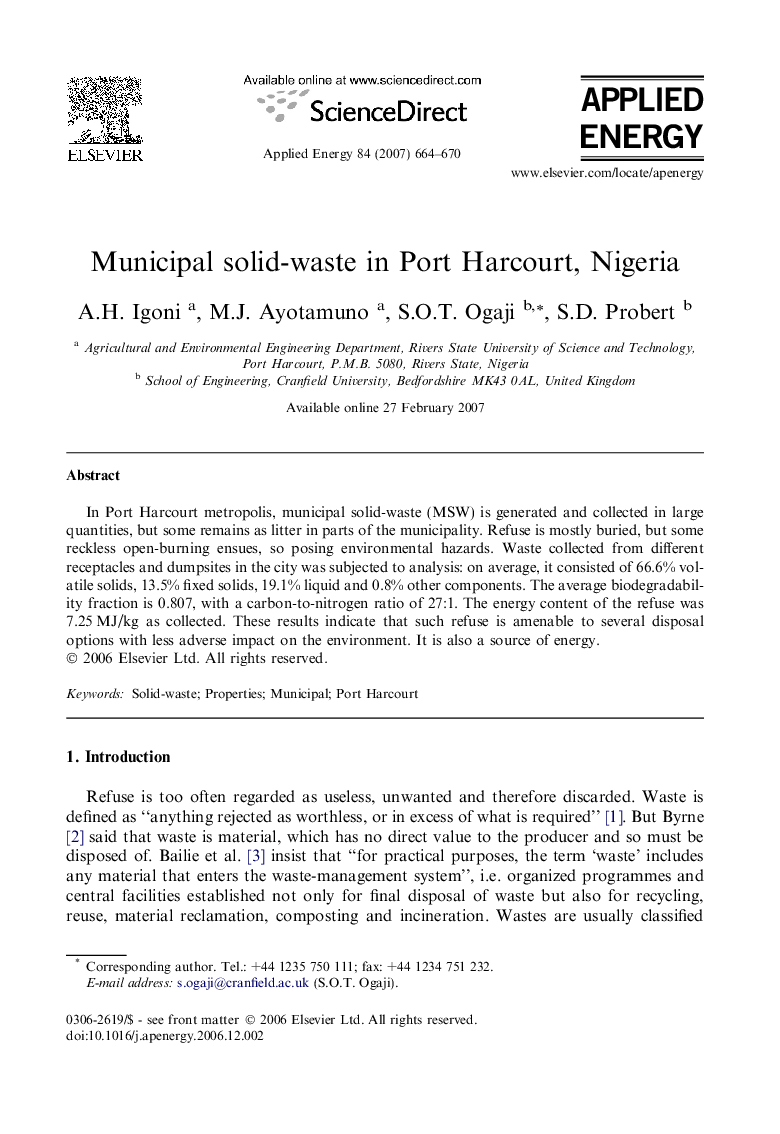| Article ID | Journal | Published Year | Pages | File Type |
|---|---|---|---|---|
| 245421 | Applied Energy | 2007 | 7 Pages |
In Port Harcourt metropolis, municipal solid-waste (MSW) is generated and collected in large quantities, but some remains as litter in parts of the municipality. Refuse is mostly buried, but some reckless open-burning ensues, so posing environmental hazards. Waste collected from different receptacles and dumpsites in the city was subjected to analysis: on average, it consisted of 66.6% volatile solids, 13.5% fixed solids, 19.1% liquid and 0.8% other components. The average biodegradability fraction is 0.807, with a carbon-to-nitrogen ratio of 27:1. The energy content of the refuse was 7.25 MJ/kg as collected. These results indicate that such refuse is amenable to several disposal options with less adverse impact on the environment. It is also a source of energy.
